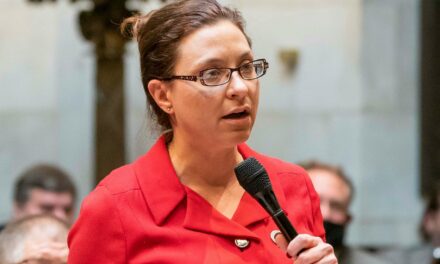
Medicaid looks to build on telehealth

Medicaid Director Jim Jones said this week that telehealth will only become more important after the COVID-19 pandemic ends.
“There’s a lot of consternation, I believe, out in the world about what happens when the pandemic is over and will Medicaid abandon telehealth,” Jones told the Milwaukee Mental Health Task Force Tuesday. “The answer is absolutely not. Telehealth has turned out to be a really positive thing for many people.”
Jones said they began to cover telehealth a year ago with “very little documentation,” due to a 2019 law and the COVID-19 pandemic. He said they’re now looking at the future of telehealth and what they should require in terms of information.
They’re in the process of developing administrative rules, part of which includes covering asynchronous telehealth, like sending photos to providers of ailments that they can look at later.
And they’re also trying to figure out facility fees, which are currently provided on where the person provides the service. They’re wondering whether or not to pay an origination fee based on where the patient is, Jones said.
“This is going to become increasingly important as more telemetry comes into place, and you can have a nurse put stickers on your body or wear a certain device and then have a doctor come back to you after reading that information to talk to you in real time,” he said.
And Medicaid is looking at how telehealth has “exacerbated the digital divide” and differences in coverage and care for people of color. “We have to address that,” he said.
Jones said they’re looking to build on a shift in how the Medicaid program treats those who are incarcerated. Last October, DHS opted to suspend their eligibility for the duration of their time in jail or prison rather than terminate it.
They’re rolling that out in state prisons and adding jails over the next year, he said. The change makes it easier for inmates to receive care outside of the correctional system, so they don’t have to apply for the program when they need treatment at a hospital, he said.
It also makes those leaving incarceration automatically eligible for the program. That means they can get Medicaid care immediately.
“This is a big step forward,” he said. “It’s something that’s been a long time in coming.”
He said they’re now considering a similar change for those who enter institutes for mental disease, which are mental health providers with more than 16 beds, for longer than 30 days. Federal law treats that and incarceration the same way, saying that the state can’t use federal money for treatment, Jones said.
Jones also said they’re committed to revising the way they pay psychiatric hospitals next year, so they’re compensated at 85 percent of cost.
Jones apologized for the year-long delay behind rolling out a Medicaid benefit that went into effect last month for substance use disorder residential treatment. He said they used that time to work with those in the industry.
“We basically came to understand the service that’s being provided, how it’s being provided and how it’s being paid for, when it’s being paid for, across the board and were able to tailor our approach to make sure that we were not putting the providers or our members at risk,” he said.
He said they also had to come to an understanding that the federal government does not allow them to use Medicaid money for room and board for those getting treatment. They’re exploring that further, but they had to find a way to pay enough for the other services to make it worthwhile for providers to offer services to Medicaid members.
“We believe we did that,” he said. Wisconsin’s benefit pays more than any other state in the country, he added.
And Jones noted that Gov. Tony Evers has included money in his 2021-23 state budget to fund room and board payments to providers. He said they now often depend on counties and others to cover the costs and they want to move away from that.
Jones also said they’re hoping to get a pilot program for a new addiction treatment model launched in May or June. The hub-and-spoke model of care will be at three sites, one in eastern Wisconsin, one in Milwaukee and another in the “north-central, northwest” part of the state, he said.
And they’re planning to provide funds to support services that help Medicaid members navigate housing and looking at ways to provide supportive home services, like tenancy support.
And they’re also considering a waiver to use Medicaid funds to address the social determinants of health, including providing help to those at risk of homelessness or experiencing it.
This article first appeared in the Wisconsin Health News daily email newsletter. Sign up for your free trial here.





